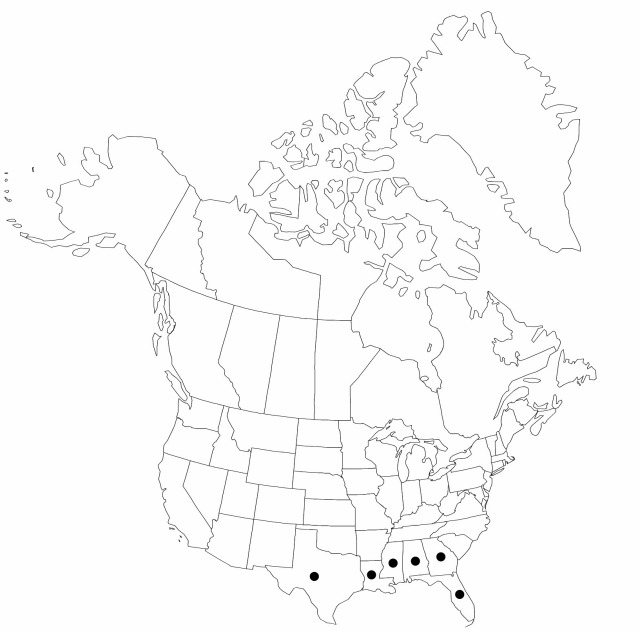Difference between revisions of "Fuirena scirpoidea"
Fl. Bor.-Amer. 1: 38, plate 7. 1803.
FNA>Volume Importer |
imported>Volume Importer |
||
| (6 intermediate revisions by 2 users not shown) | |||
| Line 6: | Line 6: | ||
|place=1: 38, plate 7. 1803 | |place=1: 38, plate 7. 1803 | ||
|year=1803 | |year=1803 | ||
| + | }} | ||
| + | |special_status={{Treatment/ID/Special_status | ||
| + | |code=W1 | ||
| + | |label= | ||
| + | }}{{Treatment/ID/Special_status | ||
| + | |code=F | ||
| + | |label=Illustrated | ||
}} | }} | ||
|basionyms= | |basionyms= | ||
| Line 11: | Line 18: | ||
|name=Scirpus scirpoideus | |name=Scirpus scirpoideus | ||
|authority=(Michaux) T. Koyama | |authority=(Michaux) T. Koyama | ||
| − | }}{{Treatment/ID/Synonym | + | |rank=species |
| + | }} {{Treatment/ID/Synonym | ||
|name=Vaginaria richardii | |name=Vaginaria richardii | ||
|authority=Persoon | |authority=Persoon | ||
| + | |rank=species | ||
}} | }} | ||
|hierarchy=Cyperaceae;Fuirena;Fuirena scirpoidea | |hierarchy=Cyperaceae;Fuirena;Fuirena scirpoidea | ||
| Line 37: | Line 46: | ||
-->{{#Taxon: | -->{{#Taxon: | ||
name=Fuirena scirpoidea | name=Fuirena scirpoidea | ||
| − | |||
|authority=Michaux | |authority=Michaux | ||
|rank=species | |rank=species | ||
| Line 51: | Line 59: | ||
|publication title=Fl. Bor.-Amer. | |publication title=Fl. Bor.-Amer. | ||
|publication year=1803 | |publication year=1803 | ||
| − | |special status= | + | |special status=W1;Illustrated |
| − | |source xml=https:// | + | |source xml=https://bitbucket.org/aafc-mbb/fna-data-curation/src/2e0870ddd59836b60bcf96646a41e87ea5a5943a/coarse_grained_fna_xml/V23/V23_45.xml |
|genus=Fuirena | |genus=Fuirena | ||
|species=Fuirena scirpoidea | |species=Fuirena scirpoidea | ||
Latest revision as of 20:40, 5 November 2020
Herbs perennial, rhizomatous, 20–60 cm, glabrous; rhizomes elongate, often forking, scaly; corms absent. Culms spaced along rhizome, erect, slender, wandlike, subterete, nodes swollen. Leaves mostly sheath; principal blades cusplike, thickened, rarely over 4 mm. Inflorescences strictly terminal; spikelets 1 or 2–5, sessile in clusters, exceeding short-linear subtending bract. Spikelets ovoid to lance-ovoid, 7–10(–15) mm, apex blunt; fertile scales ovate to obovate, 2.5–3.5 mm, ciliate; mucro erect, 1/2 or less length of scale; median ribs mostly 5. Flowers: perianth bristles equaling or slightly longer than perianth stipes, retrorsely barbellate; perianth blades ovate, as long as claws, 2–2.5 mm, base thinner, 3-ribbed, apex compressed-conic, apiculate; anthers linear-oblong, 2 mm. Achenes: body angles pale, wirelike, faces lustrous red-brown or chestnut brown, 1 mm; beak narrow, linear, distally papillate or scabridulous. 2n = 46.
Phenology: Fruiting summer–fall.
Habitat: Sands and peats, inner edges of brackish marsh, interdunal swales, mostly along seacoast
Elevation: 0–100 m
Distribution

Ala., Fla., Ga., La., Miss., Tex., West Indies (Cuba).
Discussion
Selected References
None.
